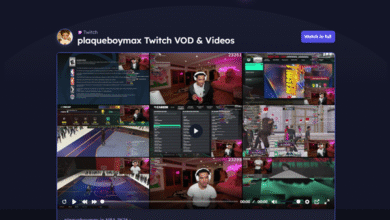What the rise of online gaming reveals about our attitudes to digital payments

Online gaming is bigger than it has ever been before, with new platforms and services seeming to pop up every day, and audiences are certainly interested in this form of gaming. Of course, with these platforms come many different forms of online digital payments. So, how have our attitudes towards these changed?
Online games and digital payments
Before we dive in, it might be a good idea to have a look at the relationship between online gaming and digital payments. To put it simply, they are very closely related and online gaming would not exist in the form it does today without digital payments. They have developed massively over the past few decades.
In recent years, the lines are becoming more blurred, with payments becoming seamlessly integrated into video gaming platforms. For example, Fortnite has risen in popularity over the past few years, and its system for digital payments is integrated into the very fabric of the game. In this case, audiences don’t seem to mind too much as the base game is free-to-play and the items you can buy are purely cosmetic, so they do not affect gameplay.
Pay-by-mobile
Something that has become rather relevant, especially within the iGaming space online, is the recent development of Pay By Mobile casinos in the UK. These sites allow players to make payments digitally within seconds, greatly improving the flow of whatever game they might be playing. This industry development has had a great impact on gamers’ perception of certain games, significantly improving their optics.
What do audiences think about digital payments?
The public’s perception of digital payments in online video games can vary massively depending on who you ask and what community they may be a part of. More casual gamers may be more accepting of transactions within a video game, especially if that game was free to begin with, whereas more passionate gamers may be less accepting of such terms.
For example, Call of Duty is already a full-priced game, but on top of that, they have integrated a system not dissimilar from Fortnite’s shop. While this has been received rather poorly within gaming communities, it has proven to be a rather large success, as the more casual players don’t seem to have an issue with it.
In the past, Call of Duty offered a pay-to-win experience, which was heavily shunned by gamers and critics alike, who thought that being able to pay for objectively better gear would be a massive detriment to the game. Players could simply buy a better version of a gun and have a clear, undeniable advantage over someone who hadn’t paid for an upgraded gun. This would have been bad enough coming from a free-to-play game, but as Call of Duty was already a full-priced experience, it led to major backlash.
Where a game can come into a bit of trouble is with something like EA’s Skate. Although it is a free-to-play experience, the audience is already niche, which has led to a majority, or a very vocal minority, of the player base expressing dissatisfaction with how the game is being marketed and presented.
On the other hand, you have more hardcore games, such as Counter Strike, which used to be a paid experience but is now free. This game includes a cosmetic system that can get rather pricy, but the audience for the game generally doesn’t seem to mind.
What games popularised this trend?
This trend has been around for longer than you may have originally thought. Of course, in its modern form, games like Fortnite rose to fame through gaining a lot of attention when video game personalities such as Kai Cenat began to play it on their platforms.
The popularisation of this trend came quite a while before this era, really finding mainstream success through the mobile gaming boom of the early 2010s. Games such as Clash of Clans were innovators in the pay to skip wait time angle. This proved to be a big success, with Clash of Clans still having a relatively solid player base.
One of the reasons the boom of transactions within mobile gaming became so popular is because of the user experience and how well it was integrated into certain apps. Since these games were accessible anytime and anywhere, it provided more opportunities for players to spend money.
Where will it go from here?
This is a trend we have been seeing more often in recent years, as the live service format of games continues to become widely popular. We are seeing much more integration of transactions within online video games. So, where can it go from here? Well, it can really go one of two ways. It will either continue to grow, allowing for dynamic gameplay systems to be integrated, or it may go the other way, with gaming communities becoming unsatisfied with the way live service games work, which may cause a shift within the gaming industry.
Conclusion
The online gaming industry is at an all-time high at the moment, with record player counts and record revenues. It doesn’t seem to be going anywhere soon. People’s attitudes regarding digital payments can vary massively, as the gaming industry harbours many different communities, but it seems that digital payments are probably here to stay in one form or another.



